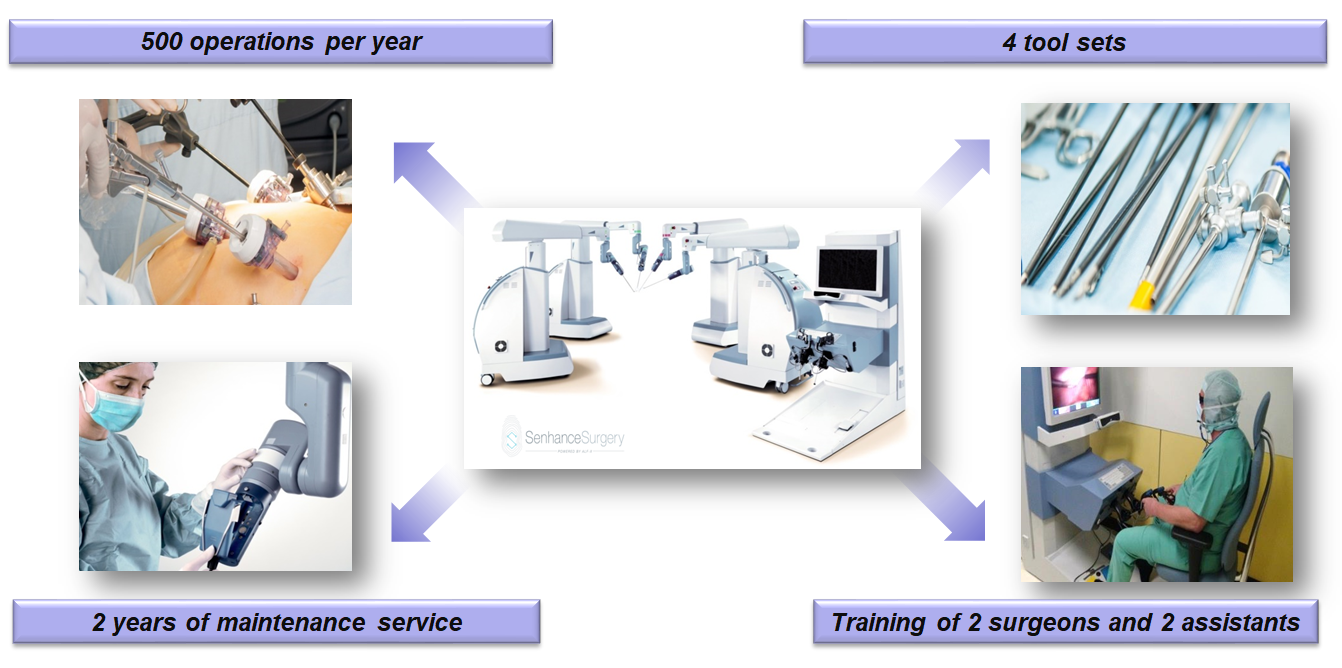Center for Robotic Surgery
Medico-Innovation Technologies
Robot-assisted surgery is an innovative technology for performing operations, when special micro-instruments are used instead of hands in the operating field, which are controlled by the surgeon.
Differences between robot-assisted surgery and traditional laparoscopic surgery
-
Three-dimensional and multiple magnification of the operating field.
-
Complete elimination of surgeon's hand tremor.
-
No need for large incisions, minimal invasiveness through the use of micro instruments.
-
High safety standards, reduced risk of infection or bleeding.
Medical Innovative Technologies a pioneer in our country in creating a robotic operating theatre.
Our company offers a complete solution to create an innovative centre for robotic surgery and laparoscopy using the Senhance robotic surgical system, Asensus Surgical, Italy.

Benefits for the patient
-
High degree of surgical precision while remaining minimally invasive.
-
Protection against accidental manipulation (artificial intelligence).
-
Rapid recovery and no cosmetic problems.

Benefits for the surgeon
-
Maintenance of professional longevity (ease of operation);
-
3D image of the operating field under the control of the surgeon's eye movements;
-
Increased freedom of movement, while maintaining standard laparoscopic access;
-
Performing time-consuming interventions without compromising quality.

Benefits for the hospital
-
Thanks to the quick system preparation technique and tool change, the operation time does not increase. The economic constraints of today's robotic systems are eliminated through the use of fully reusable tools;
-
The open platform philosophy allows the use of existing technological equipment from different manufacturers and standard trocars;
-
Ergonomics, identical to laparoscopy skills, allows to reduce the training period for endosurgeons;
-
The minimum cost of operating a robotic surgical system is comparable to the cost of maintaining traditional laparoscopic equipment.



